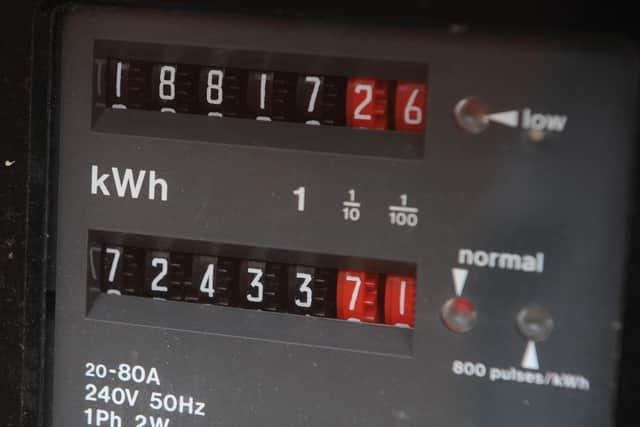Ofgem energy price cap: What is the energy price cap? UK energy price cap 2022 rise and how the energy price cap works
The energy price cap is expected to increase by a further £830 to £2,800 in October, the head of Ofgem said as a charity warned the hike will plunge households into a "deep, deep crisis".
Ofgem chief executive Jonathan Brearley told MPs the regulator is expecting an energy price cap in October "in the region of £2,800" as the market copes with "once-in-a-generation" price changes "not seen since the oil crisis of the 1970s".
Advertisement
Hide AdAdvertisement
Hide AdEnergy prices pushed the consumer prices index (CPI) to 9% in April, and Mr Brearley's remarks immediately led to calls for the Government to do more to help households cope with the deepening cost-of-living crisis.


But what is the energy price cap? And how does it work? Here’s everything you need to know about the UK’s energy price cap, how it works and how much bills will likely increase by in April 2022.
What is the energy price cap?
Introduced by the UK Government in 2019 and regulated by energy regulator Ofgem, the energy price cap places a limit on how much suppliers can charge UK households on default tariffs.
The price cap regulates the cost of energy units and is supposed to ensure that customers do not pay excessive amounts for their gas or electricity – or are not vulnerable to competitive behaviour of dominant market players. It is reviewed by regulator Ofgem every six months based on a set of rules.
It was announced in August 2021 that rising wholesale gas and electricity prices would lead to an increase in the energy price cap from October 1.
The energy price cap hike saw an estimated £139 a year added to household energy bills, with typical gas and electricity customers in the UK paying up to £1,277 since October. In line with rising wholesale gas and electricity costs currently being felt worldwide, stressed further by heightened geopolitical tensions with Russia, energy bills rose even higher in April 2022 as Ofgem is to announce the results of its energy price cap review on Thursday February 3.
How does the energy price cap work?
The energy price cap is reviewed by Ofgem every six months in accordance with changing wholesale prices in the energy market. It is used to place a limit on how much suppliers of gas and electricity can charge customers for every unit they use.
It sets a limit on the maximum amount suppliers can charge you for daily standing charges – which are the cumulative prices you pay for your home to receive energy from the national grid. The cap itself is calculated according to the prices of wholesale gas and electricity, in addition to operating costs for suppliers and taxation.
How much is the energy price cap 2022?
Advertisement
Hide AdAdvertisement
Hide AdOfgem revealed on Tuesday May 23rd that the energy price cap is expected to increase by a further £830 to £2,800 in October. Experts previously warned in 2021 that rising energy costs could possibly see a 14% price cap hike from April 2022.
Adam Scorer, chief executive of National Energy Action, said: "Ofgem's warning that the price cap will rise again by over £800 in October will strike terror into the hearts of millions of people already unable to heat and power their homes. It will plunge households into deep, deep crisis. The financial, social and health impacts are unthinkable.”
The Resolution Foundation said almost 10 million households could find themselves in "fuel stress" this winter if Ofgem's prediction comes true.
Will my energy bills go up?
If you pay your energy bills on either a standard variable tariff or default energy tariff, the energy price cap will have an impact on your bills and energy costs.
For instance, those on British Gas’ Standard, Standard PAYG, Standard Variable, Safeguard, PAYG Safeguard, Safeguard PAYGv2, FlexiPAYG Mar 2023, Welcome to British Gas and The Peoples Tariff tariffs are subject to the price cap. Households on fixed rate tariffs with their energy supplier are not affected by the price cap.
The energy price cap itself doesn’t limit how much you will pay for your bills as it applies to unit rates and suppliers, so you could find yourself paying more than the energy price cap amount in 2022 if you have a larger home or use more energy. However, given the expected increase of up to 50% on the current price cap, millions of households across the UK are likely to see their bills rise. This is because many energy suppliers could be expected to reflect the energy price cap rise with increases to standard and default tariff costs.
Additional reporting by PA.
Comments
Want to join the conversation? Please or to comment on this article.
